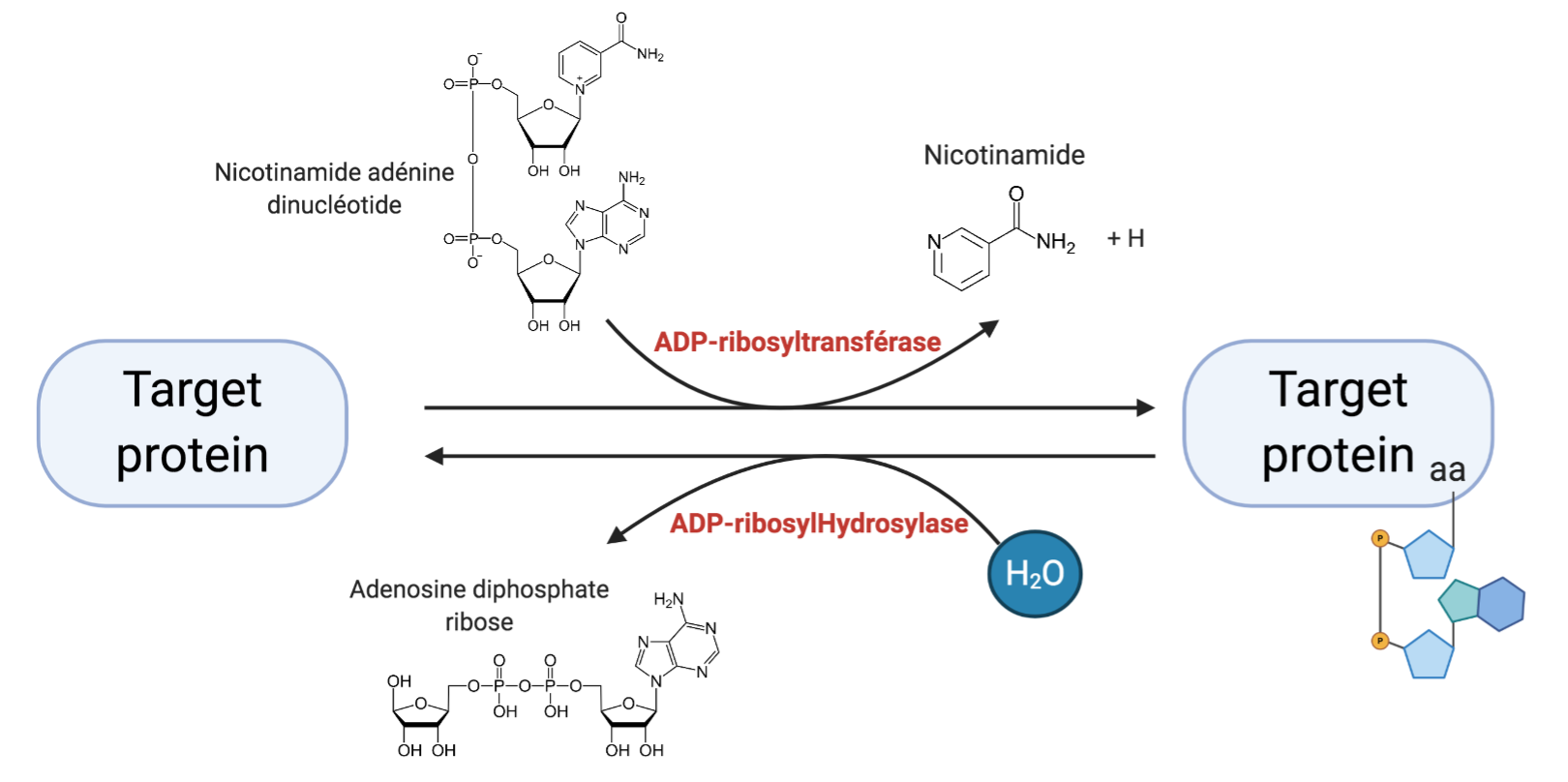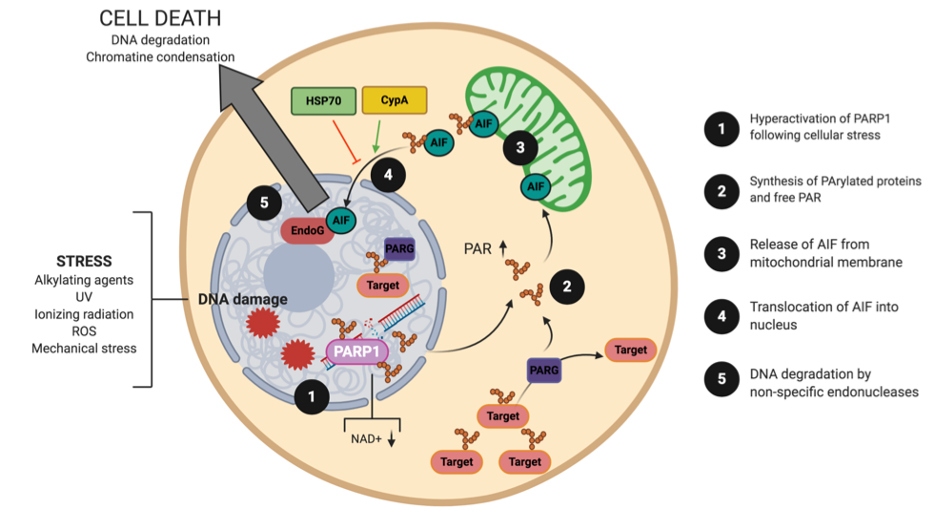Heart diseases
Dilated cardiomyopathy
Introduction
Dilated cardiomyopathy (DCM) linked to mutations in the LMNA gene encoding lamin A/C (LMNA-CMD) is a particularly severe laminopathy characterized by left ventricular dilatation, systolic dysfunction and increased interstitial fibrosis, frequently leading to sudden death. In the LMNA-CMD mouse model (LmnaH222P/H222P), Antoine Muchir’s team has demonstrated a deregulation of NAD+ metabolism which impacts ADP-ribosylation. ADP-ribosylation is a post-translational modification of proteins involving the addition of adenosine diphosphate-ribose groups to target proteins, and regulates numerous processes such as parthanatos, a cell death pathway. ADP-ribosylation has never been studied in CMD, and there are still many grey areas concerning its importance in this cardiac pathology.

Protocol development to study ADP-ribosylation
During this internship, we developed methods to study ADP-ribosylation of cardiomyocytes in LmnaH222P/H222P mouse hearts. We first developed a GST-pull down method using a macrodomain (AF1521) capable of capturing ADP-ribosylated proteins. We then turned our attention to the isolation of cardiomyocyte nuclei, since 90% of ADP-ribosylation takes place in the nucleus. Although our protocol for capturing ADP-ribosylated proteins was unsuccessful, we did manage to develop a good protocol for isolating nuclei.
Finally, we assessed the expression of various parthanatos players. We highlighted the deregulation of the expression of certain players, including apoptosis inducing factor (AIF), which seems to be retained in the mitochondria. These initial developments in the study of ADP-ribosylation and parthanatos pave the way for better characterization of ADP-ribosylation in CMD and its functional importance in pathophysiological processes.
